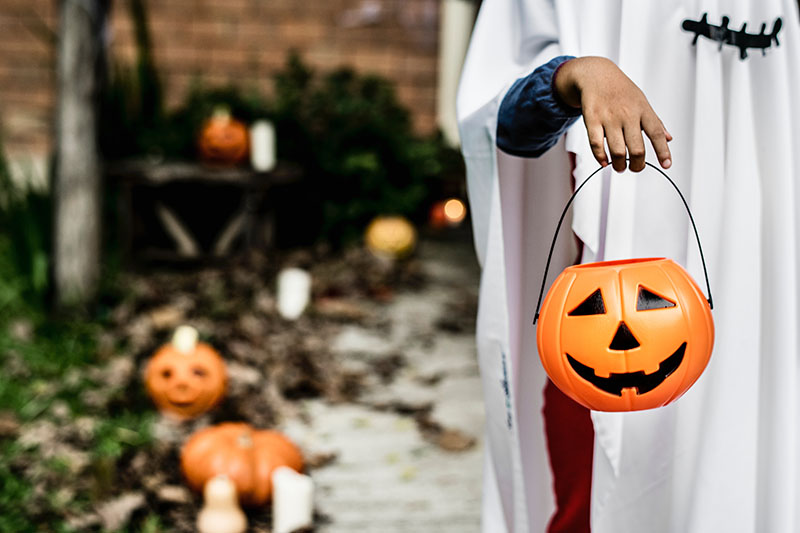When little people are overwhelmed by big emotions, it’s our job to share our calm, not join their chaos.
L.R. Knost
This week, the kids in your life likely have one type of “treat” on their minds.
And that’s not a bad thing!
But, since Halloween only comes once a year, candy isn’t exactly a sustainable solution.
In fact, when it comes to emotional wellness, we know that finding a variety of ways to consistently treat yourself is essential.
Last year, we highlighted what this means for grownup self-care in this post.
Today, we’re coming back to the topic.
But, this time, it’s just for the kids.
Read on for some simple examples of self-care for kids, and how you can help them get started today:
Self-care for kids: The basics
For starters, talk with your kids about what self-care means. (Check out this post for a little refresher.)
Ask what it means to them.
Then, help them get started with some self-care basics.
FOR EXAMPLE:
- Review important contact details (e.g., home address, phone numbers).
- Outline what to do in an emergency (e.g., practice calling 911.)
- Discuss personal boundaries, when to say No, and how to ask for help.
- Ask which clues they can look for to help decide if they’re hungry, thirsty, or tired.
Self-care for kids at home
Home should be a place of safety, rest, and fun. Help your kids brainstorm ways they can set up their home environments to support self-care.
FOR EXAMPLE, THEY MIGHT:
- Arrange the pillows, blankets, and stuffed animals on their bed to make it extra comfy and inviting.
- Keep an assortment of books, magazines, and art supplies near their bed in case they have trouble sleeping.
- Set aside space in their closet for the coziest socks and jammies.
- Create a “self-care kit”: Fill a basket or shoebox with comforting/soothing/distracting objects, like:
- music
- reading material
- special toys or objects
- (weighted or unweighted) blanket
- photos of loved ones
- something soft or textured to touch
- something nice to smell (e.g., candle or essential oils)
- a reassuring letter, note, or quote to read
Self-care for kids on the move
Helping kids find ways of moving their bodies that feel good is a powerful gift you can give them. Try to follow your kids’ lead and help them use their creativity.
FOR EXAMPLE, YOU CAN HELP THEM:
- Go on “adventure walks” around your neighborhood and see what you discover.
- Try a new sport, game, or activity.
- “Show off” their favorite stunts, tricks, or dance moves with an at-home performance.
- Teach you a new move or drill they’re learning at practice/rehearsal.
- Practice some yoga poses (or simply stretch on the floor) at home.
- Start a dance party in the living room. (Let them pick the music.)
Self-care for kids in the kitchen
Although food shouldn’t be the only form of self-care a child learns, it can be a wonderful way to calm themselves and engage their senses.
FOR EXAMPLE:
- Have your child choose a recipe (you can find fun, kid-friendly cookbooks at your local library), and make it together.
- Enlist your kids’ help deciding which meals to plan for the week.
- Post a grocery list with a pen in the kitchen, and invite your kids to add their own ideas throughout the week.
- Bring them grocery shopping, and give them the “mission” of tackling as many items on the list as they can.
- Go on a kitchen “scavenger hunt” and see how many of the following you can find:
- something spicy
- something sticky
- something crunchy
- something chewy
- something messy
- something yummy
- something unfamiliar
Self-care for kids at the “spa”
No need to break the bank or spend tons of time on this. You can help your kids create a relaxing experience right there at home.
FOR EXAMPLE THEY CAN:
- Create a designated “relaxation zone” in their bedroom, playroom, or other spot in the house.
- Practice stretching before bed or right when they wake up.
- Give themselves a foot rub.
- Gently scratch or tickle their own arm.
- Diffuse an essential oil.
- Enjoy a bath or simply press a warm washcloth on their face.
- Cool down with an ice pack on their forehead or back of the neck, or by holding an ice cube on the inside of their wrist.
Self-care for kids in relationship to others
Teaching your kids that “self”-care can be about other people, too, is one of the best gifts you can give them.
FOR EXAMPLE YOUR KIDS CAN:
- Thank someone who has done something kind for them.
- Share something they’re grateful for on the way to school, at the dinner table, or before bed.
- Write a note or draw a picture for someone they care about.
- Learn to say “thank you” in a different language.
- Use one of their unique talents or skills to brighten someone else’s day.
Enjoy this post? You might also like:
The Trick Is Treating Yourself to Self-Care
Emotions 101: Improving Your Emotional Vocabulary
Your Emotional Wellness: 50+ Ways to Support It
Ready to learn ways of modeling self-care for kids?

